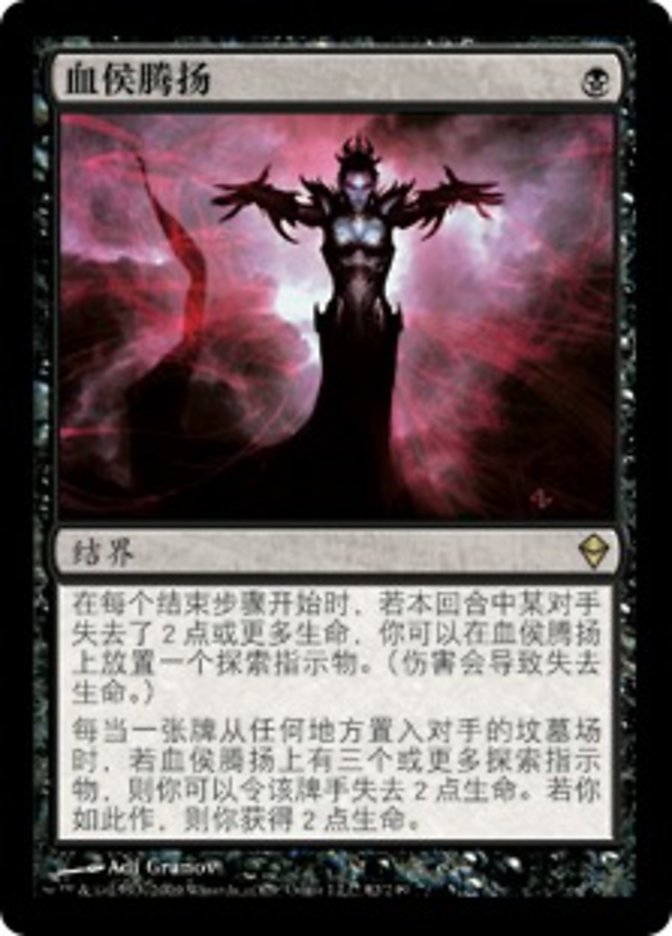
血侯腾扬 {B}
结界
在每个结束步骤开始时,若本回合中某对手失去了2点或更多生命,你可以在血侯腾扬上放置一个探索指示物。 (伤害会导致失去生命。)
每当一张牌从任何地方置入对手的坟墓场时,若血侯腾扬上有三个或更多探索指示物,则你可以令该牌手失去2点生命。 若你如此作,则你获得2点生命。
Illustrated by Adi Granov
- Standard
- Not Legal
- Alchemy
- Not Legal
- Pioneer
- Not Legal
- Explorer
- Not Legal
- Modern
- Legal
- Historic
- Not Legal
- Legacy
- Legal
- Brawl
- Not Legal
- Vintage
- Legal
- Timeless
- Not Legal
- Commander
- Legal
- Pauper
- Not Legal
- Oathbreaker
- Legal
- Penny
- Legal
Toolbox
Buy This Card
Notes and Rules Information for 血侯腾扬:
- Only the English version of a Magic card receives Oracle updates and errata. View this card in English. (Scryfall note)
- Bloodchief Ascension’s first ability has an “intervening ‘if’ clause.” It won’t trigger at all unless an opponent has already lost 2 or more life by the time the end step begins. (2009-10-01)
- Bloodchief Ascension’s first ability checks how much life was lost by each opponent over the course of the entire turn, even if Bloodchief Ascension wasn’t on the battlefield the whole time. (2009-10-01)
- For the first ability to trigger, a single opponent must have lost 2 life. Two opponents each losing 1 life won’t cause it to trigger. It will trigger a maximum of once per turn, no matter how many opponents have lost 2 or more life. (2009-10-01)
- Bloodchief Ascension’s first ability checks only whether life was lost. It doesn’t care whether life was also gained. For example, if an opponent lost 4 life and gained 6 life during the turn, that player will have a higher life total than they started the turn with — but Bloodchief Ascension’s first ability will still trigger. (2009-10-01)
- Bloodchief Ascension’s second ability doesn’t behave like a leaves-the-battlefield triggered ability, since the card put into an opponent’s graveyard may come from anywhere. If a Bloodchief Ascension with three quest counters on it and a permanent an opponent owns are destroyed at the same time, for example, the game will not “look back in time” at the game state, and Bloodchief Ascension’s second ability won’t trigger. (2009-10-01)